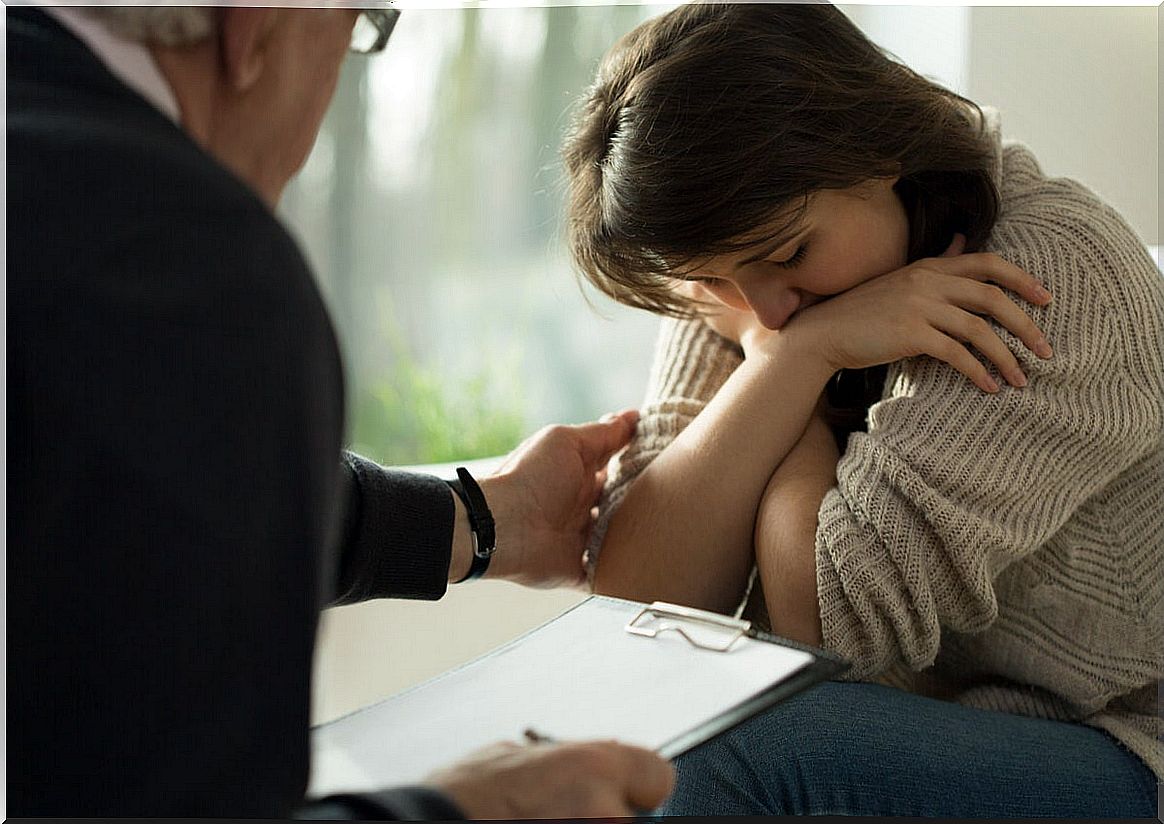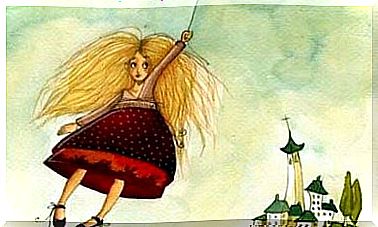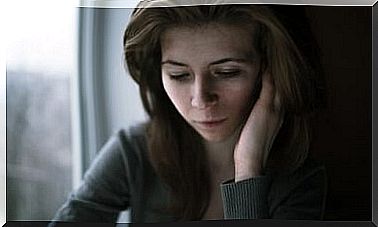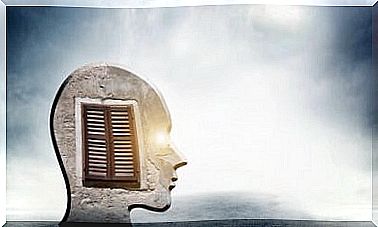Hafephobia, Fear Of Physical Contact

Does the concept of hafephobia sound familiar to you? It is about the fear of physical contact and constitutes a specific phobia (an anxiety disorder). Specific phobias are defined as intense and disproportionate fears of certain stimuli or situations.
This fear generates discomfort in the person who suffers from the phobia and interferes in their daily functioning (that is, in the different areas of their life: work, social, academic …). On the other hand, there is an avoidance of such situations (or they are endured with a high degree of anxiety).
What else do we know about haphephobia? What can be its cause? How is it treated from psychotherapy? We will tell you!

Haphephobia, the fear of physical contact
Haphephobia is the phobia, or intense fear, of physical contact with others. Specifically, the person fears being touched by other people, and feels excessive anxiety about that possibility. It is a specific phobia, a type of anxiety disorder categorized as such in the DSM-5 ( Diagnostic and Statistical Manual of Mental Disorders ).
In the case of haphephobia, as in most specific phobias, the fear is irrational. In addition, we say that fear is disproportionate because it occurs in a situation that a priori is not dangerous (the fact that someone touches us). As a result of this fear, in haphephobia the patient manifests a series of intense physiological, cognitive and emotional responses, which we will see below.
Symptoms of haphephobia
What does it mean to have an extreme fear of physical contact with others? A series of symptoms at a cognitive, physiological and behavioral level that are manifested in the subject when he is in contact with other people who can touch him (that is, at the mere idea of being touched, or directly when touched).
- Cognitive : the cognitive symptoms of haphephobia involve a high level of distress, discomfort and anxiety. Nervousness, concentration difficulties, terror, thoughts of death or loss of control, contagious thoughts, etc. also appear.
- Behavioral : as a result of hafephobia, the person manifests avoidance behaviors in any type of situation in which they can be touched by another person. Thus, avoid being with other people (especially in closed or small spaces), interacting closely, etc.
- Physical and physiological : at a physiological level, symptoms of a specific phobia may appear; upset stomach, dizziness, nausea, vomiting, headaches, hyperventilation, feeling of choking, racing heart, etc.
As we said, these symptoms are triggered by the phobic or feared situation. That is, at the idea of being touched or when someone touches the person.
Origin and causes
There are certain theories that point to the fact that there is a certain biological predisposition in humans to develop fear of certain stimuli, especially potentially dangerous stimuli. This is what would explain how our ancestors took advantage of this evolutionary tendency to fear what can harm or kill.
On the other hand, learning processes have also been postulated as causes of phobias (the classical conditioning of Ivan Pavlov). Pavlov, a Russian physiologist, showed that dogs were capable of associating a stimulus that elicits a reflex with another that does not, and that the latter could also elicit the same response as the first stimulus. Later, John B. Watson, an American scientist, showed that classical conditioning also occurred in humans, and this could be at the basis of many phobias. Thus, haphephobia, like many others, can be learned.
How? Through traumatic experiences with people, for example (contact with others would end up generating fear in those who suffer from the phobia). On the other hand, phobias are also learned through a vicarious process (vicarious observation), that is, observing someone who fears physical contact we can develop haphephobia. Of course, it is important that the person we observe suffers the negative consequences of physical contact with others, and that we identify them.
Treatment of haphephobia
There are two psychological treatments of choice, according to the Guide for effective psychological treatments by Pérez et al. (2010) and the Horse Manual (2002), for specific phobias. This is the exposure therapy of cognitive therapy. In the case of haphephobia, through exposure the patient will be progressively exposed to the phobic stimulus (in this case, contact with others), through a hierarchy of items.
The order of the items will be: from least to most phobic for the person. On the other hand, cognitive therapy focuses on changing the patient’s dysfunctional thoughts associated with contact with others ; these types of thoughts are usually catastrophic, dysfunctional and above all, unrealistic.
Through cognitive restructuring, it is intended to modify these thoughts for more realistic and adaptive ones. And it is that, in the genesis of phobias, dysfunctional thoughts take on a very relevant role.

Final thoughts
Haphephobia is a strange phobia that involves fear of contact with others. It can appear due to the fact of having lived a traumatic experience associated with others. It should not be confused with social phobia, which involves a fear of social interactions for fear that others will laugh at us, make a fool of ourselves or evaluate us negatively.
The psychological treatment in the case of haphephobia will focus on exposing the patient to the phobic stimulus, so that his body will “disassociate” the anxiety symptoms with that stimulus, and little by little he will get used to it. Cognitive therapy also offers good results in this regard.









